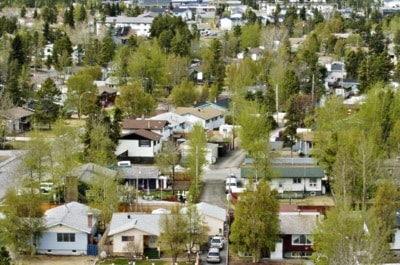The president of the Yukon Teachers’ Association says it’s “inexcusable” that the Yukon government didn’t follow up after high radon levels were found in four schools in 2008.
But Jill Mason said she’s satisfied that the government is now taking the right steps to fix the problem.
“Obviously … we feel that the safety of the students and the staff is paramount and it is concerning,” she told the News on March 9.
Still, she’s pleased that the education department is now retesting all Yukon schools for the colourless, odourless, carcinogenic gas.
After the release of an auditor general’s report this week, the Yukon government admitted it failed to monitor public buildings, including schools, after high radon levels were detected nearly a decade ago.
The Department of Education is now monitoring all Yukon schools, and it appears that all four of the schools that had high radon levels in 2008 still do. Remediation has been ordered or carried out at all four schools — Jack Hulland Elementary, Holy Family Elementary and the Teen Parent Centre in Whitehorse and Nelnah Bessie John School in Beaver Creek.
The auditor general’s report also found that Yukon’s health department had no records of steps taken to deal with high radon levels found in two residential care facilities in 2008.
The health department and the health and safety board are now testing radon in 12 facilities, including group homes, continuing care centres and the Young Offenders Facility.
In 2008, 21 private child-care centres and family day homes were also tested for radon, and seven were found to have unacceptable levels. The health and safety board is now retesting the four centres that haven’t since closed or moved.
The health department says it has also sent letters to all licensed child-care centres and family day homes in the territory, encouraging them to test for radon.
But NDP Leader Liz Hanson says the government could do more to ensure that private centres are taking radon seriously. She believes the health department could make radon testing a requirement for licensing these facilities.
“Why wouldn’t you just put that as another one on your checklist with regard to licensing?” she said. “I don’t get why that’s not just something you would do.”
Yukon Lung Association president Doug MacLean said it’s important that all buildings where people spend more than four hours a day be tested, not just facilities where children are present.
“Requiring testing as part of a licence would only be effective if all occupied buildings are tested annually as part of a licensing procedure,” he told the News in an email.
Health department spokesperson Michelle Boleen said the department has put together an internal working group to study the issue, but it’s unclear whether the government will consider making radon testing a licensing requirement. She said radon testing is not a licensing requirement in other Canadian jurisdictions.
“We are looking forward at ways that we address the issue of radon in child-care centres,” Boleen said.
The Yukon’s Public Service Commission is also working on a corporate radon management policy, to be completed in the 2017-18 fiscal year, that will set out a process for testing radon in government buildings.
But it’s unclear why none of this happened back in 2008, when the original testing was done during a pilot project carried out by the Yukon Workers’ Compensation Health and Safety Board and paid for by the board, Health Canada and several Yukon government departments.
The project seems to have been a response to a 2007 Health Canada decision to lower the acceptable level of radon in homes from 800 to 200 becquerels per cubic metre.
In 2008, the health and safety board measured radon levels in 166 buildings, including schools, residential care centres, other government buildings and private workplaces.
In total, 31 buildings had radon levels exceeding 200 becquerels per cubic metre. Five buildings had levels above 600 becquerels. The final report from the pilot project recommends that action be taken on all 31 buildings “within two years.”
That report was completed June 16, 2008. But after that, things get a little hazy.
The board says its final report was delivered to all relevant Yukon government departments. The report includes a recommendation that the Department of Health and Social Services “communicate directly with all day cares and day homes to have their operations tested.”
But the health department claims it never received that report. And the health and safety board acknowledges that the person contracted to conduct the pilot project left soon after the report was complete.
“Things stopped very abruptly for us at that point,” spokesperson Andrew Robulack said.
Still, the miscommunication didn’t stop there. The health and education departments both say they don’t have proper records that show whether remediation was carried out in the buildings with high radon levels.
Conversely, the Department of Highways and Public Works claims it carried out long-term testing of its own on the government buildings singled out in the pilot project.
It says only two of those buildings required remediation, and that work was completed in 2009.
It’s unclear why the various departments seem to have different information.
“They don’t seem to have actually talked to each other,” Hanson said.
But one thing is clear — no further monitoring was carried out on other government buildings until 2016.
Hanson said the standing committee on public accounts, chaired by Yukon Party interim leader Stacey Hassard, will further investigate the issue during a public hearing. No dates have been set for the hearing.
Contact Maura Forrest at maura.forrest@yukon-news.com
